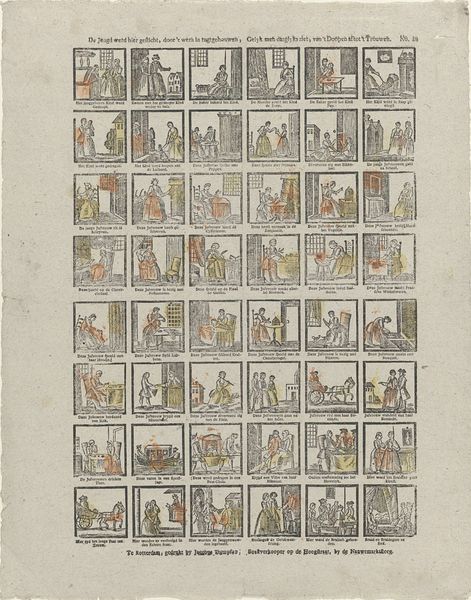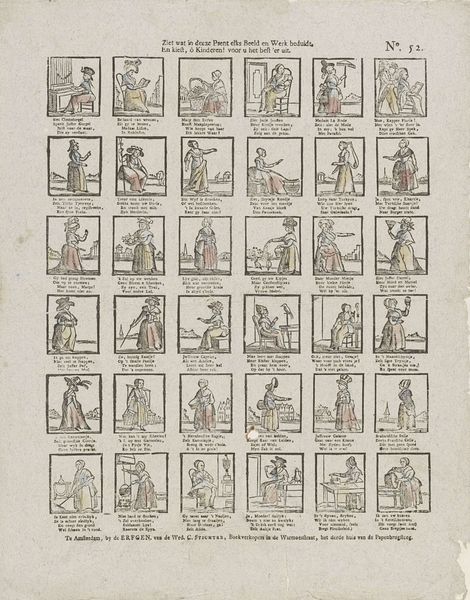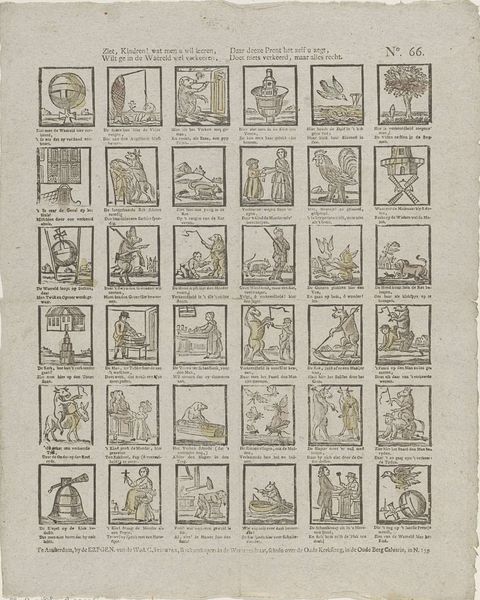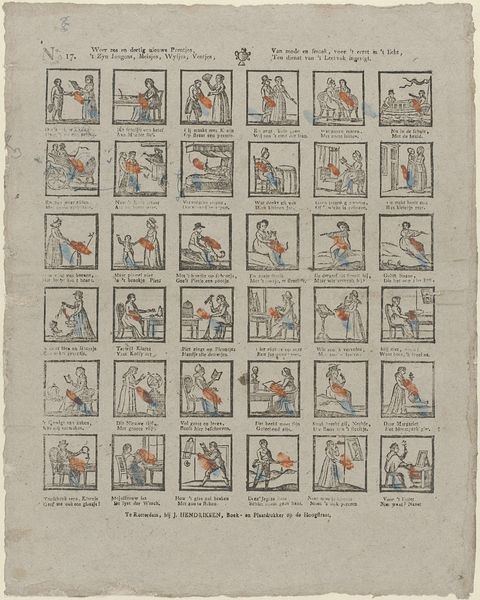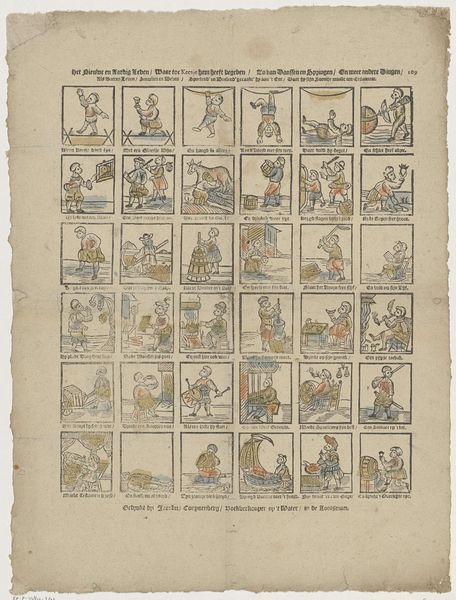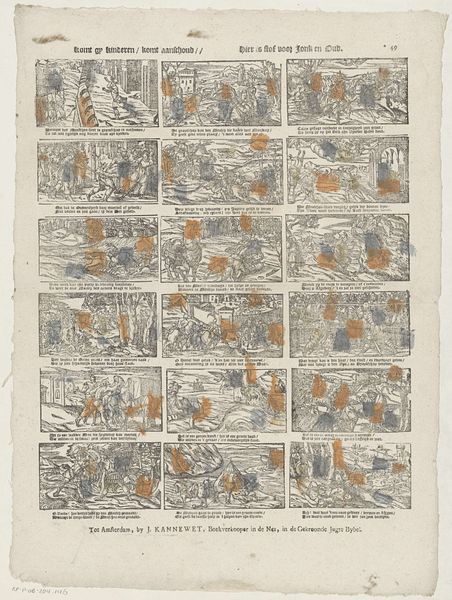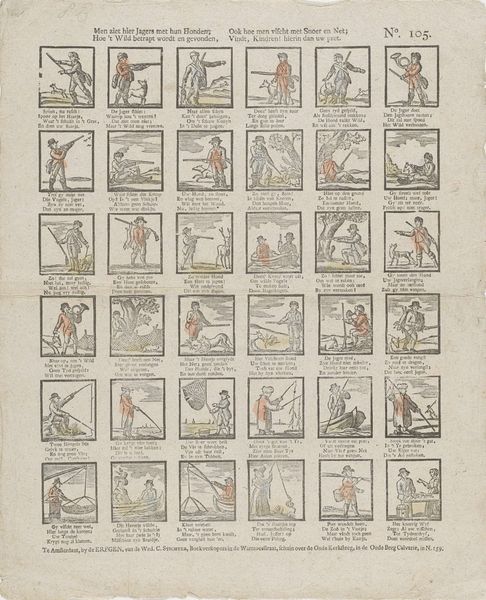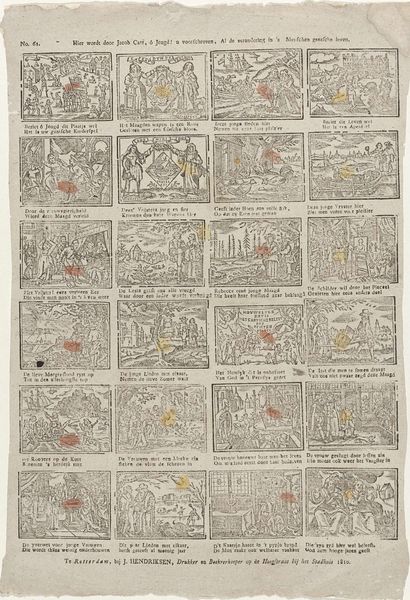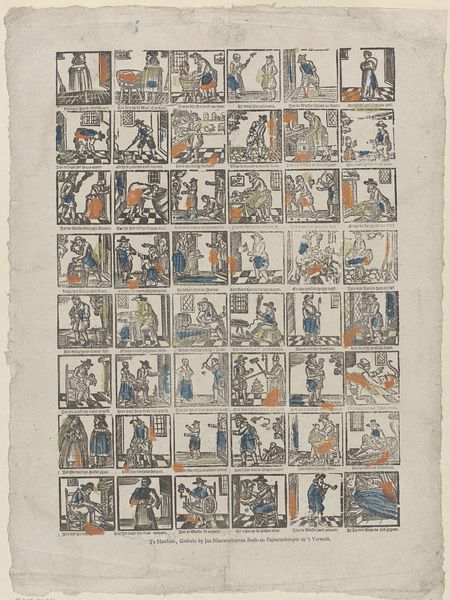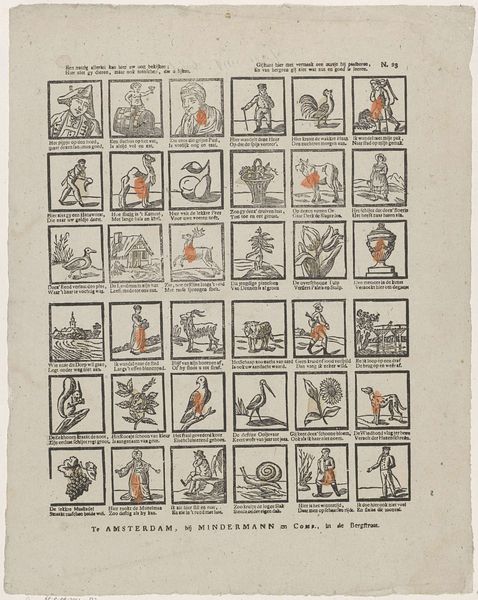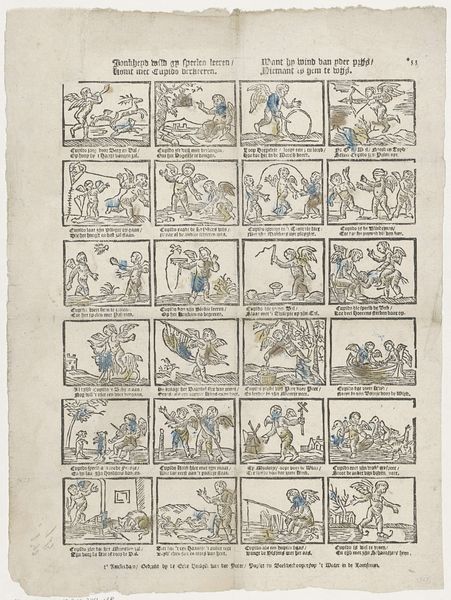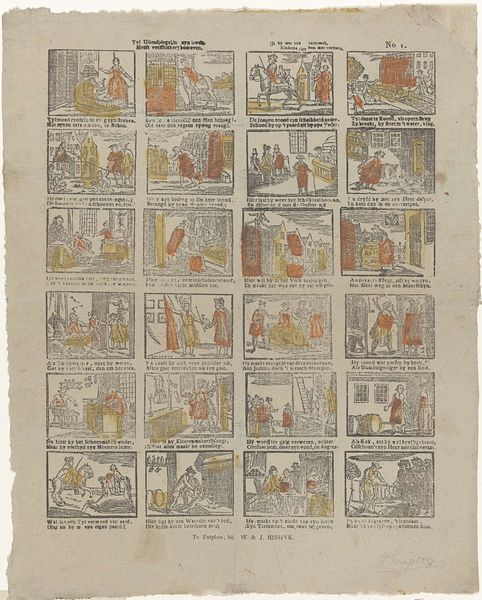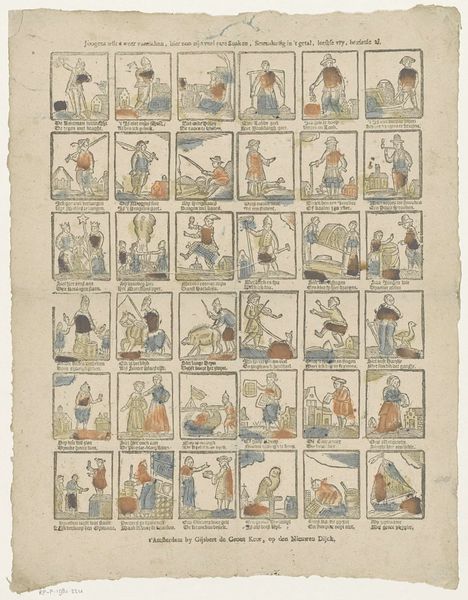
Nu word u wederom een kinder-spel gegeéven; Nochtans een groot verschil aen dat van Nomber zeven / Encore un nouveau Jeu d'enfants, Qui n'est pas un des moins plaisants 1800 - 1833
0:00
0:00
philippusjacobusbrepols
Rijksmuseum
graphic-art, print, engraving
#
graphic-art
#
comic strip sketch
#
narrative-art
# print
#
pen sketch
#
sketch book
#
personal sketchbook
#
sketchwork
#
pen-ink sketch
#
comic
#
pen work
#
sketchbook drawing
#
genre-painting
#
storyboard and sketchbook work
#
sketchbook art
#
engraving
Dimensions: height 395 mm, width 324 mm
Copyright: Rijks Museum: Open Domain
Editor: This print, "Nu word u wederom een kinder-spel gegéven…" by Philippus Jacobus Brepols, made sometime between 1800 and 1833, seems like an early form of a comic strip or a game board, perhaps? It feels quite dense, almost overwhelming with all these little scenes. How do you interpret this work? Curator: It's fascinating how Brepols presents childhood play within such a structured grid. I think it's important to consider the social context. During this period, ideas about childhood were evolving. Do you notice any contrast between the rigid format and the children's supposed freedom? Editor: I see what you mean. The grid feels very controlled, but the scenes themselves are quite chaotic, kids running, hitting each other, playing pranks... Is this contrast intentional, maybe a comment on social expectations? Curator: Exactly. The Enlightenment brought new philosophies on education, but societal structures still heavily influenced behavior. The artist places children’s unruly behaviour inside of the grid, containing this disruption. What does that say about acceptable expressions of identity then, and even now? Editor: That's really interesting! I hadn't thought about it as a commentary on social control versus individual expression. The scenes looked purely anecdotal. Now I wonder if the artist was advocating for or critiquing those constraints. Curator: And who benefitted from those constraints? Thinking about these seemingly simple depictions of children in terms of power dynamics changes our perspective completely. Editor: Absolutely. It highlights how even seemingly innocent depictions of childhood are entangled with social and political forces. I’ll never see a children’s book in the same way! Curator: It is exciting to think how much we can unpack from everyday images.
Comments
No comments
Be the first to comment and join the conversation on the ultimate creative platform.
